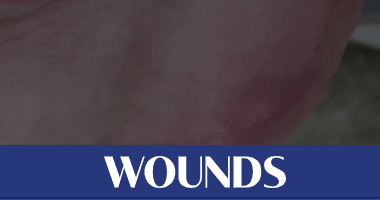Joseph McGowan


Nonhealing diabetic wounds are common complications for diabetic patients. Because chronic hypoxia prominently delays wound healing, sustained oxygenation to alleviate hypoxia is hypothesized to promote diabetic wound healing. However, sustained oxygenation cannot be achieved by current clinical approaches, including hyperbaric oxygen therapy. Here, we present a sustained oxygenation system consisting of oxygen-release microspheres and a reactive oxygen species (ROS)–scavenging hydrogel. The hydrogel captures the naturally elevated ROS in diabetic wounds, which may be further elevated by the oxygen released from the administered microspheres. The sustained release of oxygen augmented the survival and migration of keratinocytes and dermal fibroblasts, promoted angiogenic growth factor expression and angiogenesis in diabetic wounds, and decreased the proinflammatory cytokine expression … read more
on Full-thickness Wound Healing in Mice
The wound healing properties of honey, including blossom honey, are well known; however, the effects of honeydew honey during the wound healing process have not yet been investigated and thus remain unclear.Objective. This study compares the effects of honeydew honey with those of blossom honey. Materials and Methods. A total of 140 mice were divided into 2 control groups, which received either a hydrocolloid dressing (HCD; n = 22) or gauze (n = 22), and 4 experimental groups: honeydew honey (n = 23), Acacia honey (n = 23), Manuka honey (n = 22), and Japanese Pharmacopoeia honey (n = 28). Two circular full-thickness wounds were made and measured for 14 days. Each wound in the experimental groups was treated with 0.1 mL of honey and covered with gauze. Dressings in the control and experimental groups were changed daily. Results. The wounds in all of the honey groups and the HCD group were moist by day 14, while those in the gauze group were dry. The ratio of wound area to initial wound area and the number of inflammatory cells decreased during the inflammatory phase in all honey groups. However, the honey groups exhibited reepithelialization rates of < 40%, numerous neutrophils, weak wound contraction, and impaired collagen deposition in wounds after day … read more